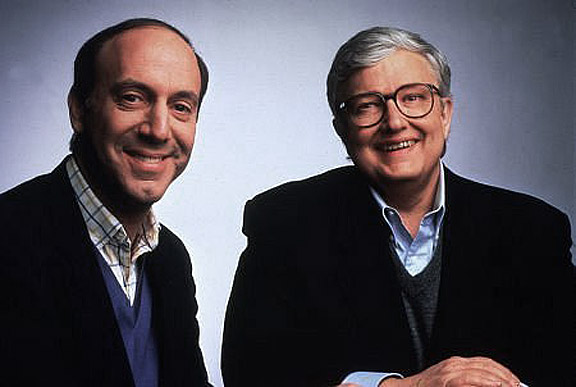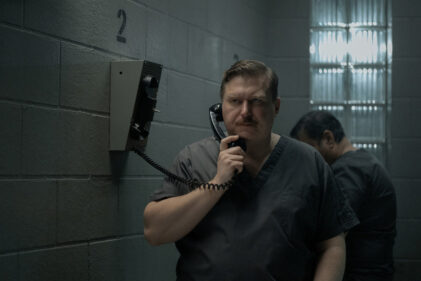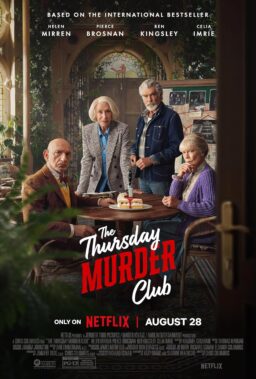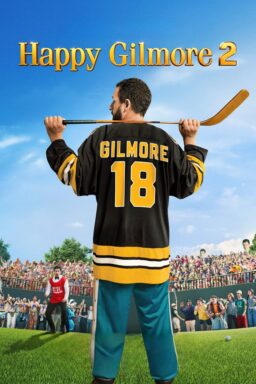Ladies and gentlemen, on behalf of Doctor Simeon Faustus Abrams’s
House of Cinematic Sociopolitical Horrors, allow me to welcome you to our
humble haunted home. I’m your host, Doctor Abrams, and if this your first time
joining us, welcome. It’s my first tour, too, so that makes two of us! In case
you stumbled in line without realizing what you paid for: the House of
Cinematic Sociopolitical Horrors is, well, exactly what it sounds like. You’re
all smart people, so you don’t need me to tell you this. But horror films are
often the most direct avenues to our collective fears. It’s a free space for
artists, hucksters, fanboys, and fellow exploiteers to either plumb their ids,
or maybe just plumb ours. To wit: the horror movie is, as my honorable patron
Matthew Barnabus Zoller Seitz has commiserated with me repeatedly—in the
strictest of confidences—the best film genre! Each room I’m about to usher you
through is full of unfathomable terrors that will shock and surprise you;
man-made monsters imported from the darkest of cinemas just to push your
buttons.
To be honest, many of our attractions are politically
retrogressive and/or conservative. But while we don’t promise you the best in
horror films, we will show you stuff that tastelessly probes hot button issues
of race relations, the economy, and that old-time religion. The House of
Cinematic Sociopolitical Horrors is your no-judgments, one-size-fits-most
outlet for thankless provocation. For your hard-earned dollars, we’re offering
nothing short of the most important horror movies of the year! There’s no
refunds, by the way, so don’t bother asking later. Let’s go! Spoilers ahead!

We begin at a room called “Jesus Saves—Just Not You!” I know what
you’re thinking: what can I tell you about Jesus Christ that you haven’t
already heard in other Christian panic narratives like “God’s Not Dead”? Well,
I’ll tell you, hypothetical guest of mine: we’ve got the year’s definitive
Christian horror film right here. You probably know it already since word about
quality attractions gets around fast. “Left Behind” isn’t your average horror
film; it’s a testament to fundamentalist fears of subsisting in a
post-Christian world. That’s right, without Christianity, here represented
through token signifiers like the wedding ring that Nicolas Cage’s adulterous
air pilot refuses to wear, the world will be bereft of its primary and most
important source of spirituality!
“Left Behind” is an utterly harrowing experience because it’s
designed to simultaneously coddle you and make you feel dirty for not bring
religious. Don’t believe me? Take a gander at agnostic heroine Irene Steele,
played by Lea Thompson. Irene’s not really a heathen. No, she’s just confused!
Her mother is a born-again Christian, and that makes Irene angry! She’s fed up
with hearing about Jesus, and doesn’t get how anyone could, as one sagacious
character conveniently tells her, ignore a lot of terrible things, and see the
truth, namely that God works in mysterious ways.
Anyway, then the Rapture happens, and boom, all the god-fearing
people disappear, leaving everyone else try to prove their love to God,
themselves, you, etc. These characters are not, in other words, completely forsaken,
as another bit player kindly explicates: they just have to be better people!
Look at Irene’s dad, played by action hero extraordinaire Nicolas Cage. He had
an affair, buthe, an air pilot,
still manages to land a plane full of faithless, post-raptured people under
extremely poor conditions: no runway, no runway lights, no nothing! And he does
it all with Irene’s help, too!
Ok, are we all here? Good, ‘cause here comes the next room, one I
like to call “It’s Always the Economy, Stupid!” In this vault of horror, a room
dedicated to agitating your already troubled money-minded heads, we have a
couple of attractions. There’s “At the Devil’s Door,” a spooky drama about how
bereft, empty and probably obsolete the concept of home-ownership, bank loans,
and family can be. And in that adjacent corner, you’ll find “Cheap Thrills,” a
black comedy about two broke guys who compete for an eccentric rich dude’s
cashola.

And in the center ring is “The Purge: Anarchy,” a delightfully
muddled allegory that ends in the exact opposite place as “Left Behind.” While “Left
Behind” assured you, the viewers, that they you too can be saved if you act
selflessly, “The Purge: Anarchy” ends with Sergeant, Frank Grillo’s hero, being
blown away for no good reason! What a world, right?
We here at the House of Cinematic Sociopolitical Horrors chose to
foreground “The Purge: Anarchy” because we know you don’t trust the police
after the death of Eric Garner, and the recent protests in Ferguson. That’s
exactly the fear on which the “Purge” films prey. Imagine, if you will, that
you live in a society where for one night a year, you can commit any crime you
want. “The Purge: Anarchy” expands on that premise considerably by having an
Anonymous-type hacktivist group implicate the government for forcing everyone
to participate in a Hobbesian war of all against all. These concerned citizens
urge everyone within earshot to not participate in Purge Night activities since
that’s what Big Brother really wants.
So, if you follow this logic: roving gangs are just as bad as
bloodthirsty blue-bloods, but you can trust civic-minded (but armed!) hackers
because apparently, a lawless society requires militia-like heroes who are
violent for the sake of stopping violence! They’re fascists for democracy, you
see, which is more than can be said about the cops that blow away Sergeant, a
violent—but conflicted!—hero, after he does the right thing, and stops himself
from killing the man responsible for his daughter’s death. If there’s a lesson
to be learned from “The Purge: Anarchy,” it’s that you should trust no one
except maybe some random altruists who use the internet to live out their
vigilante dreams.
But hey, maybe the reason you don’t trust the police isn’t just
because they’re authority figures, but because the death of Eric Garner speaks
to our country’s troubling history of racism. If so, step right up for an
attraction we like to call “Fear of a Black Sibling.” American horror movies
have a history of using African-American supporting characters to re-inject a
sense of spiritual mystery, and the supernatural into the lives of alienated
white protagonists. For example, in “Annabelle,” a recent spin-off to “The Conjuring,”
a black neighbor teaches the film’s expecting—and very white—female protagonist
how to protect herself from demons who want her baby.

Better yet, see “Jessabelle,” a Southern Gothic horror story in
which Jessie (Sarah Snook), a pale, freckled Southern woman, is haunted by an
off-white ghost while she recuperates from a bad car accident on her daddy’s
old plantation home. Steady now, you may be complaining to me: hey, that sounds
like a spoiler. Well, here’s the thing: “Jessabelle” treats racial tension like
a jack-in-the-box that they spring on you at the last minute. There are,
however, hints throughout the film that lead up to its icky, race-baiting
conclusion. Look now, there’s Jessie relaxing in a bath tub filled with viscous
blood. The demon that claws its way out of that tub and assaults Jessie is
tellingly covered in tar-black gunk. More importantly, in the scenes where
Jessie tries to talk to black people—all hysterical, voodoo-revering
Southerners—none of them have anything to say beyond hostile admonishments.
Still, stick around, and you may find “Jessabelle” speaks to a
very confused kind of liberal guilt. The film is about the revenge of repressed
black spirits, like the (black) man who has an affair with Jessie’s mother, and
is murdered by Jessie’s father after Jessie’s mom gives birth to a little black
girl. In that sense, the film’s ending makes Jessie suffer for her daddy’s sins
since he was a jealous white man who couldn’t stand the shame of being
cuckolded.
We pause here to mention that, since there weren’t any really
gross movies that addressed sex this year, the Libido Lounge is currently
condemned and/or under renovation. Come back later, we’ll fleece you real soon!
Ahrm.

I know what you’re thinking: Doctor Abrams, this is too much
external pressure! What about good old-fashioned family values, surely those
are still sacrosanct in today’s modern day and age. Well, yes, and no. Here,
let me show you something. We now come to the “Home, Sweet, Horror” wing of our
humble haunted home. Here you’ll find such fine distractions as “Housebound,”
an exceptional New Zealand horror film in which Kylie (Morgana O’Reilly), a
disenchanted teenage girl, is placed under house arrest, and forced to take her
fuddy-duddy mother seriously. More specifically: strange goings-on in Kylie’s
house lead her to believe that maybe her mom’s not wrong when she says that
their house is haunted. Kylie starts to see things for herself, stuff that
can’t just be waved away…and the most vocal alternative authority figure, the
one who tries to steer Kylie away from superstitious thoughts is the one
responsible for the haunting! It’s a Scooby Doo-type twist, but it does suggest
that sometimes mother knows best.
For a somewhat more progressive take on the role of family in our
modern lives, check out “The Babadook.” You probably know this one, or have
heard of it, anyway. It’s an Australian film about Amelia (Essie Davis), a
single mother who can’t get over the violent death of her husband, not even
seven years after his passing. Amelia’s son Samuel (Noash Wiseman) can’t get
over his dad’s death either, so he and his mom are visited by a story-book
monster called Mr. Babadook, a monster that warns his victims up-front that
once he shows up, “you can’t get rid of” him. That may sound like a hokey premise
to you, but, hand to my heart, it’s true: you really can’t get rid of that guy.
Even after the Babadook seems to have been banished by sheer force of Amelia’s
will, he just sort of lives on in her basement. Come at the right time, and
you’ll find Amelia feeding the Babadook—it even has its own doggy bowl!

Now it’s serious time: the best horror movies make you co-exist
with the monsters they dredge up. They refuse conciliatory gestures, and make
you realize that the icky stuff inside you isn’t going to go away after you
recognize it’s there, and is in fact part of you. This, incidentally, is a
convenient segue for our final chamber of horror, a hall of mirrors that I like
to call “You Need Satan More Than He Needs You.” And if anyone asks, we didn’t
crib that title from a Future of the Left song, ok? That’s for our lawyers to
decide. Ok, everyone inside? Yes? Ok, let’s go.
If you look behind me, you’ll see “Starry Eyes,” the nastiest of
this year’s bumper crop of nasty horror films. “Starry Eyes” follows an
aspiring actress who we later realize is responsible for her own downward
spiral. Poor Sarah (Alex Essoe): she wants to be a star so badly that she tears
her hair out, gives oral pleasure to a Roger Corman-esque film producer, and
even makes a deal with the aforementioned producer’s demon-worshipping buddies.
Still, in spite of all this, Sarah is the film’s monster. All the
jealous types that sneered at her single-minded drive toward securing a part in
a prominent new horror film? In the end, they’re revealed to be human after
all. They care about Sarah, even if that concern is of the selfish please-don’t-die-on-my-lawn
variety. So when Sarah finally succumbs to supernatural forces at film’s end,
it’s a self-fulfilling prophecy. Because if you want something badly, you’ll
get it…even if you can’t recognize the person you become along the way.
Ok, tour’s over, everyone out. The line for re-entry starts over
there, and oh, don’t forget to tell your friends. We’re just dying to see them,
ha!












